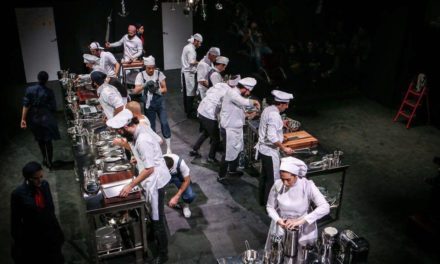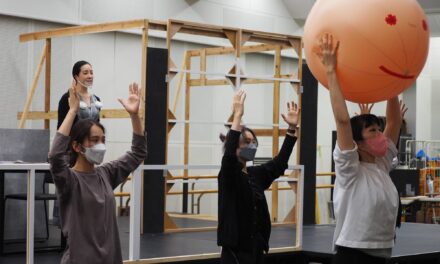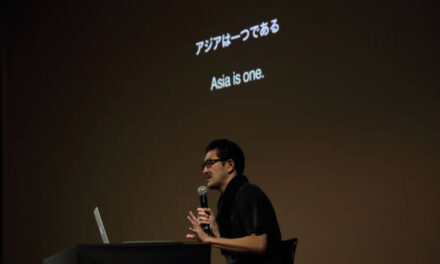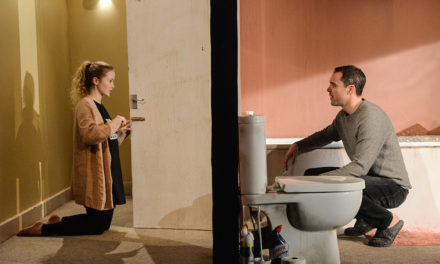Edinburgh in August is a kind of Mecca for theatergoers around the world. It is due to its International Festival and the Fringe that spread theater all around the city. Almost any place could become a theatre venue, and billboards wrap the capital of Scotland completely. There are so many options that any festival-goer can be stuck and spend more time looking at the program than watching plays.
Eventually, there is a learning process to deal with those drawbacks. First, this development includes talking to strangers that are in Edinburgh with the same purpose as you, seeing as many shows as possible. It does not matter if they are artists, media workers or spectators. Any of them could give you a piece of advice about plays that you should not miss out.
Secondly, you could base your choices on your interests. For example, the kind of theater you like, the subjects of the plays, the playwright or company you want to know or you are following, or to have a first contact with the theater of the guest country. Finally, may luck be with you. I mean, let chance take you wherever it wants to take you.
Following all these tips, the festivals become chaotic, and it could bias the overall impression of them. However, it will give you the opportunity to discover new plays and companies, or to give a second chance to plays and companies you already know, and to enrich your understanding of theatre.
Accordingly, I gave a third try to Calderón de la Barca’s Life is a dream directed by Declan Donelan. I saw it twice in Spain and it had not pleased me. Admittedly, this third time it has not changed my opinion, but I do witness how Scottish audiences enjoy the play. How they laugh at the Clarín played by Goizalde Núnez. On the other hand, they also laugh at Segismundo, played by Alfredo Noval, when he arrives at the palace and becomes a ridicule dictator after having been isolated during eighteen years. The same audience that is moved and keeps silent when Segismundo embraces his father, King Basilio, played by Ernesto Arias, one of the best Spanish theater directors and actors. Emotions that the audience thanks with great applause and bravos at the end of the show, as much as Spanish audiences did during the long tour of this production in Spain.
Trying to get to know the Spanish theatre coming to Edinburgh, I ended up seeing The Imitator. A show in which Julian Fontalvo, a Colombian actor who lives and works in Spain, tells his biography. The story of a person talented for imitating voices of the great and well-known pop singers and how he manages to succeed with that gift, after having a hard time in New York. From my seat I see how a story as simple as this is able to thrills, amuses and surprises the spectators. I think this is due to the truth with which he tells it. As well as his amazing ability to play more than seventy characters on stage in less than an hour in the tent that was set up on George Street one of the main and popular areas in Edinburgh.
Word of mouth takes me to Pleasence to see The ice hole: A cardboard comedy by Pierre Guillois. Physical theater that draws from the tradition of mimic and the great silent film comedians to tell a story starring a sailor in love with a mermaid. A long trip from Iceland to seabed that children and adults laugh aloud. A party for audiences. An imaginative production where almost everything is made of cardboard, from shoes to costumes and wigs. A play that will not only give children ideas to continue playing when they get home but will also make many adults remember their happy childhood playing with cardboard.
Just as my desire to see Scottish theater takes me to the Traverse Theater. It is there that I see Nat McCleary’s Thrown and Kieran Hurley’s Adults. The former about a group of women preparing for the Highland games serves to talk about gender, feminism, age, race and social networks in a nationalistic setting. The second is a comedy about a sixty-something high school teacher, married with two daughters, who arrives early for his first date with a hustler, whereupon he meets a former student who has a Ph.D. in Children’s literature, although she works as a prostitute for a living. This former pupil uses her studies about traditional tales to explain him his behavior as an adult. Neither of these two plays aims to be avant-garde in terms of staging and acting. Both plays are more interested in generating a political and social debate about feminism in Scotland or about adult sexuality at the present time.
Without leaving the same venue, again by chance, because when I arrived it was the play for which there were tickets left, I saw After the act (a section 28 musical). The play analyzes the consequences for the LGTBI+ community of Margaret Thatcher’s policies to prohibit the promotion of homosexuality in schools. This ban coincided with the outbreak of the HIV epidemic. Both factors coincided in time and caused a silence around these groups in United Kingdom that persists today. A musical that shows that it does not take big budgets to make one of those, but a company committed to what they do, say and sing.
The same commitment that I saw in Peepshow (Club Remix) by Circa, an Australian circus company, at the Circus Hub. A show close to burlesque that revisits typical circus routines by adding sensuality to them. Something that, even having seen many circuses shows, they renewed and made them interesting and exciting again. Trust me, the scene of the stiletto heels, a revisiting of the typical spectacle of the fakir lying on a bed of nails, hurts on the seats.
I also found this revisionist intention in the opera Bluebeard’s Castle by Bela Bartok directed by Daisy Evans. A modest production that nevertheless updates the anecdote very well without diminishing the score, thanks to Hebrides Ensemble, nor what is sung in it, thanks to Susan Bullock and Lester Lynch. A consistent revision in which Judith, the last wife of Bluebeard, has dementia, and he tries to make her to remember her past life by showing her the different rooms of the castle. This makes it more of a romantic opera than anything else.
Who does not revisit An Oak Tree is Tim Crouch, its author and, this time, director and one of the two main actors. That gave the opportunity to see how the author himself made a play that was so different from the usual and that had revolutionized the way of doing theater.
For those who do not know the play I would like to remember that the cast of the play are two people. One is on stage every night, in this production is Tin Crouch. The other one changes every day, this actor does not know the play, and receives indications of the first one during the show. Above all, the purpose of this way of working is to avoid any repetitive and fixed performance after several days of rehearsals. However, in my opinion, this way of performing goes against the verisimilitude of the play and makes it difficult to understand the characters.
Puppet shows do not seem plausible to me either. Especially if the marionettes are big because it will take several actors to manipulate them, and they must be on stage. However, I did not have this problem seeing JM Life & Times of Michael K, a novel by Coetzee adapted for puppets by Lara Foot. Among other things, because they have focused on telling the story as well as possible. In order to do so, they have not hesitated to resort to any theatrical technique that could be useful to them. The result is a very well adjusted and measured show that moves the audience by appealing to their best feelings. The story stars a black person who lives in South Africa in the times of apartheid and the South African Civil War whose cleft lip causes the rejection of other people. It is true that the plot does not sound very comforting. Yet this production is, and so is the prose of its author. Perhaps because it manages to establish a fellowship with the spectator beyond race, gender or nationality. Elements that will guarantee it a long stay on stage and touring theatre festivals around the world.
At last, but not least, Food by Geoff Sobelle is also an innovative piece of immersive theatre. In it, the audience sit down at a large table where the actor, playing the role of a waiter, will serve them a meal. Meanwhile, it tells the story of the long journey that humanity has made from living and eating in the wilderness to the current way of feeding. The long trip done from hunting and caves till junk food and skyscrapers. It is awesome how this company make this story interesting for almost any audience. In fact, they do it so well and the spectators like it so much that the tickets for this show are among the most demanded of the festival..
That is all I have been able to see in four days. Very little if you think of all that is programmed at the Edinburgh International Festival and the massive Fringe. Productions that show the interest of artists, renowned or not, in contemporaneity in terms of form and/or content. Trying to give an answer to the question that Nicola Benedetti, the new director of the eif, has used as claim of the festival, “where do we go from here?” With all the plays discussed in this article it is not possible to come up with a concrete answer to this question, although they do provide enough material to try to answer it..
This post was written by the author in their personal capacity.The opinions expressed in this article are the author’s own and do not reflect the view of The Theatre Times, their staff or collaborators.
This post was written by Antonio Hernández.
The views expressed here belong to the author and do not necessarily reflect our views and opinions.


















